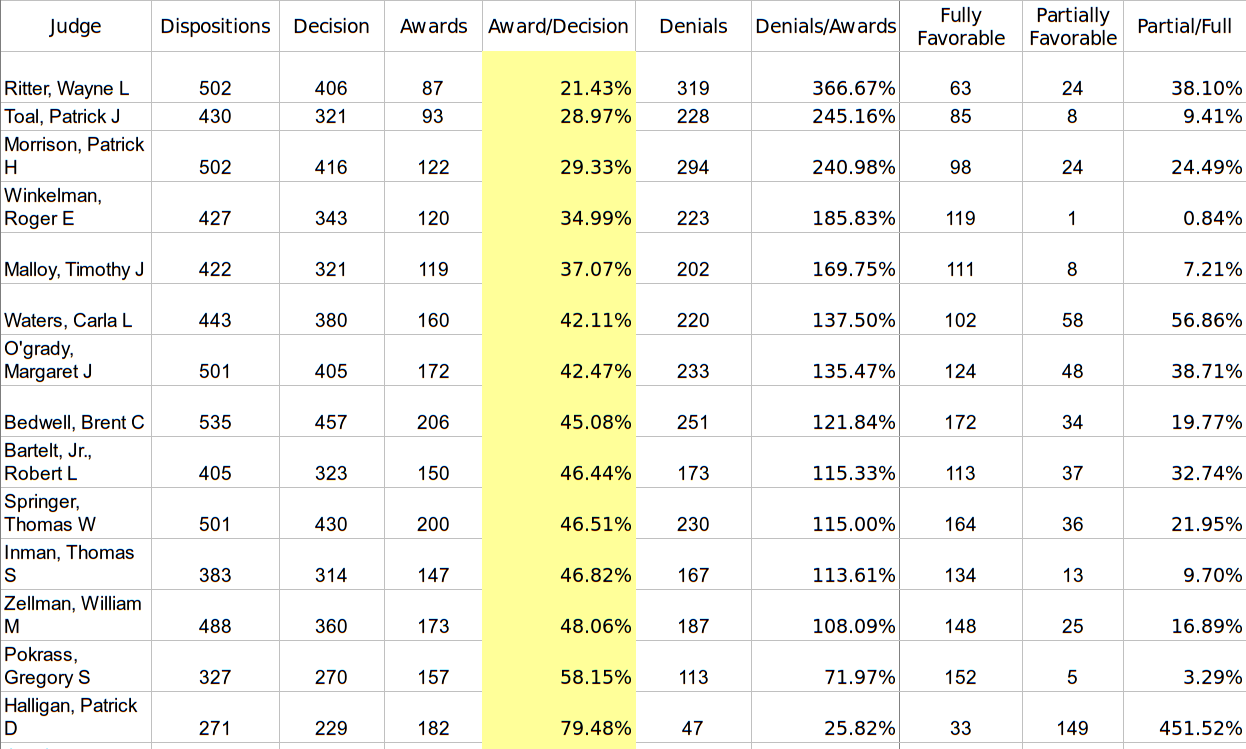
Here is a sample from the spreadsheet adapted from SSA data, showing all of the Milwaukee Wisconsin ALJ’s with decisions at the time SSA published its data (for 9-29-12 thru 9-27-13). These data suggest that there is no meaningful inter-rater reliability across judges.
Because of this unreliability in decision making across ALJs, I have argued for a long time that the Social Security adjudication program is no more reliable than a flip of a coin. In short, SSA's adjudication system is not fair because it is not reliable. That is no longer a unique idea.
From the Editorial at the Chicago Tribune:
Judicial performance statistics show wide disparities in the awarding of benefits. You can run into Scrooge or Santa Claus, depending on where you are. In the last six months of 2013, judges in Illinois approved 44 percent of their cases, roughly even with the national average of 43 percent. But judges in the Evanston office approved 62 percent while those in Peoria approved 38 percent.
The SSA has pledged to follow up on suspicious patterns. If a judge is approving or rejecting practically every application, or is moving so many applications that it's clear they're not getting enough scrutiny, the judge should be required to justify his record.
The rancid abuse of Social Security disability program Editorial
The argument from the Tribune that there is not enough oversight of SSA judges is not quite right. One of the best ways to evaluate how well an ALJ is doing is to see how many times he or she has been reversed by a District Court or the Appeals Council and to read the remand orders. There is plenty of oversight by federal courts and SSA, but SSA keeps the results from the general public. District Court orders reversing an ALJ's decision rarely give the ALJ's name. SSA never releases data about its specific ALJ reversals by the Appeals Council, and SSA will not release data showing District Court reversals by ALJ. How about it SSA, isn't it time to release those data to the public?
I put SSA's September 2013 ALJ disposition data in a spreadsheet with calculations showing the percentages of favorable and unfavorable decisions. But that does not tell us how many times each ALJ had been reversed. It's time for SSA to tell the public the entire story about each ALJ.
Here are SSA's data: http://www.ssa.gov/appeals/DataSets/03_ALJ_Disposition_Data.html
You can download my spreadsheets here and see what your chances are of winning your case before you go to your hearing. Good luck!
This posting was updated on January 16, 2014